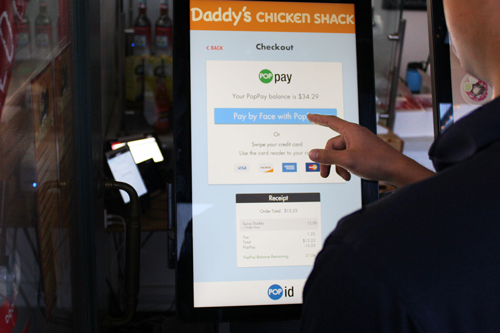 Payment kiosks are increasing in number and in the verticals where they are used. Many grocers and big box stores have implemented self-checkout to keep lines short, provide shoppers with greater convenience, and make the most of labor – one associate can manage multiple checkouts equipped with kiosks that accept payments rather than one traditional checkout lane.
Payment kiosks are increasing in number and in the verticals where they are used. Many grocers and big box stores have implemented self-checkout to keep lines short, provide shoppers with greater convenience, and make the most of labor – one associate can manage multiple checkouts equipped with kiosks that accept payments rather than one traditional checkout lane.
Additionally, kiosks that accept payments are appearing in quick service and fast casual restaurants, healthcare provider offices, utility and local government offices, and in a range of locations for accepting nonprofit donations.
Traditional types of kiosk payments include cash, allowing customers to use bills or coins, and more recently, accepting payment cards, EMV cards and contactless payments via card or mobile wallet. However, kiosk payment innovation isn’t standing still, and new options are emerging.
Here are three alternative kiosk payment options that may benefit your clients:
1. Kiosk Payment via Facial Recognition with PopID
Drive-thru, quick service, and counter service restaurants in California have been the first to implement payment by facial recognition technology. PopID, a Cali Group company, developed this alternative kiosk payment option. Customers can sign up for a PopID account, link their credit or debit card, and then opt-in to start a facial recognition scan at any PopID-enabled business; successful scans process the payment instantly.
These kiosk payment solutions began popping up on college campuses. Cali Group CEO John Miller explained, “Young people that have grown up taking pictures of themselves and posting them on the internet have no problem with facial recognition.” Soon after gaining on-campus popularity, restaurants like Daddy’s Chicken. For businesses, implementing the solution has added benefits, including increased speed of service as well as lower payment processing fees for credit and debit transactions.
2. QR Code Payments
Another alternative kiosk payment option — and one that is quite affordable for small businesses– is QR code payment. Mobile phone camera technology enables customers to automatically read codes from several feet away and make a payment without requiring them to download apps. QR codes that direct customers to a payment page can be accessed from a customer display or printed onto a receipt.
With distanced, touchless payment experiences in demand since the COVID-19 pandemic began, QR code payment adoption has seen a significant increase, driven in part by the high-profile partnership between CVS and PayPal.
3. Text-to-Pay Solutions
It’s no secret that mobile ordering increased due to COVID-19. For example, Yum Yum Brands saw a 40 percent uptick in mobile and kiosk ordering, representing 40 percent of sales in Q2 2020. However, for a first-time customer, downloading an app and setting it up with the personal information required to process the transaction may discourage them from the process. Text-to-pay solutions are designed to decrease this payment friction.
A text-to-pay solution allows a business to send a text message to a customer placing an order on a kiosk or a smartphone. The customer uses the link in the text to pay remotely. The solution can also trigger a real-time notification when the customer arrives to pick up the order.
Keys to Kiosk Payment: Distance, Convenience, and Speed
You can add value to the software and solutions you provide to your clients by enabling kiosk payment with as little friction as possible. It will help your clients turn first-time customers into loyal customers through convenient payment experiences, shorter lines and quick service.
Evaluate whether alternative types of kiosk payments can benefit your customers and integrate them with your solutions to position your business and your users on the cutting edge



